We arrived at Easter Island as planned on Wednesday morning. The weather was fine with a slight breeze, but the sea swell was a cause for concern. We watched large waves crashing onto the rocks along the shoreline. This was not a good sign.
Suddenly, with a booming bang, the ship shuddered. This happened several times as the anchor dragged and shook the vessel each time it broke free from the rocky seabed.
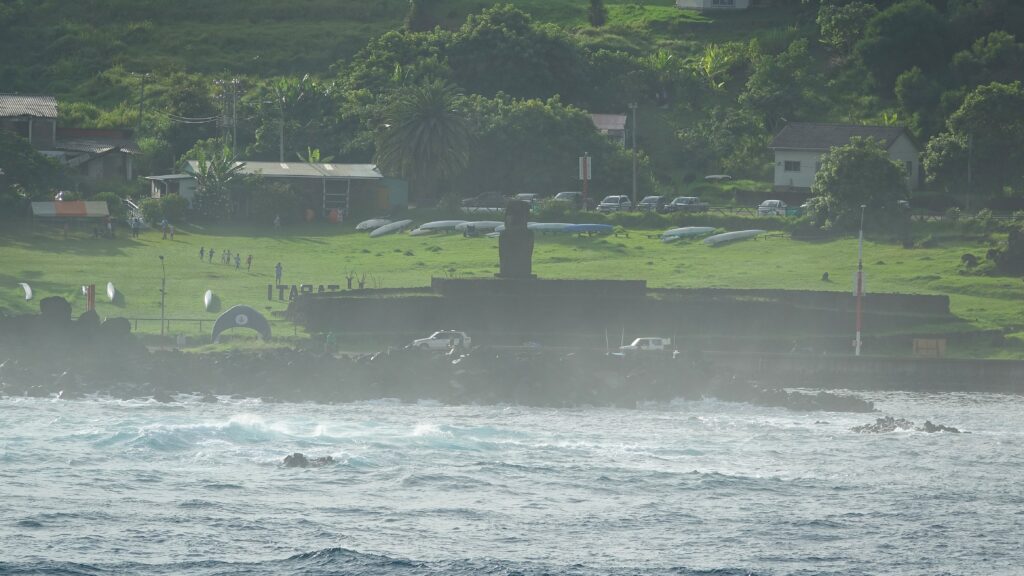
Then came the announcement, ‘This is your captain speaking from the bridge.’ The ship fell silent as we heard the news that we would not be able to go ashore due to the adverse sea conditions.

But he went on to say that we would sail around to a location on the other side of the island in the hope that conditions were better there.

An hour later we arrived at another small port. A tender was lowered into the sea and a party of crew members headed towards the small pier to check if a landing operation would be possible there.
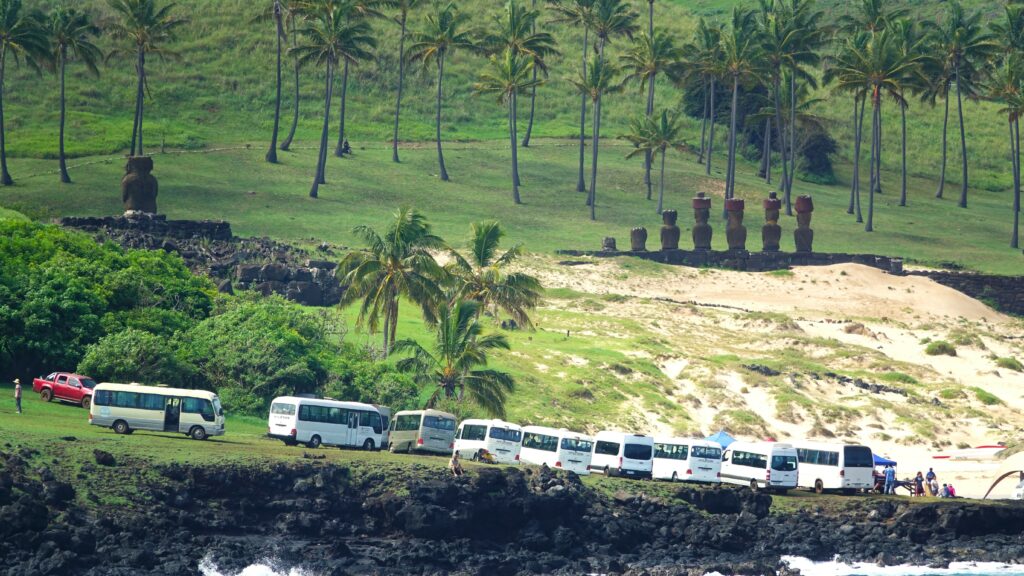
The touring vehicles that were ready to receive us at the first location had already relocated to meet us but, as the small tender boat bounced back to the ship, the news came that it was also too dangerous to attempt a landing here.
Our hearts sank, both for ourselves and for the islanders who’s livelihood depends on passing trade such as ours.
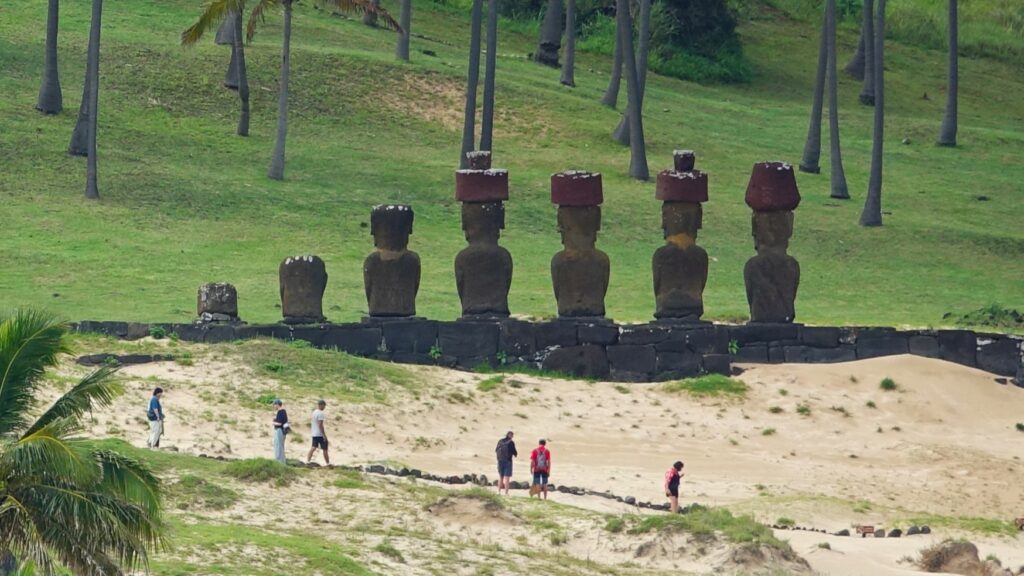
We then sailed completely around the island which at least gave us the opportunity to see some of the moai (statues), but only from a distance.
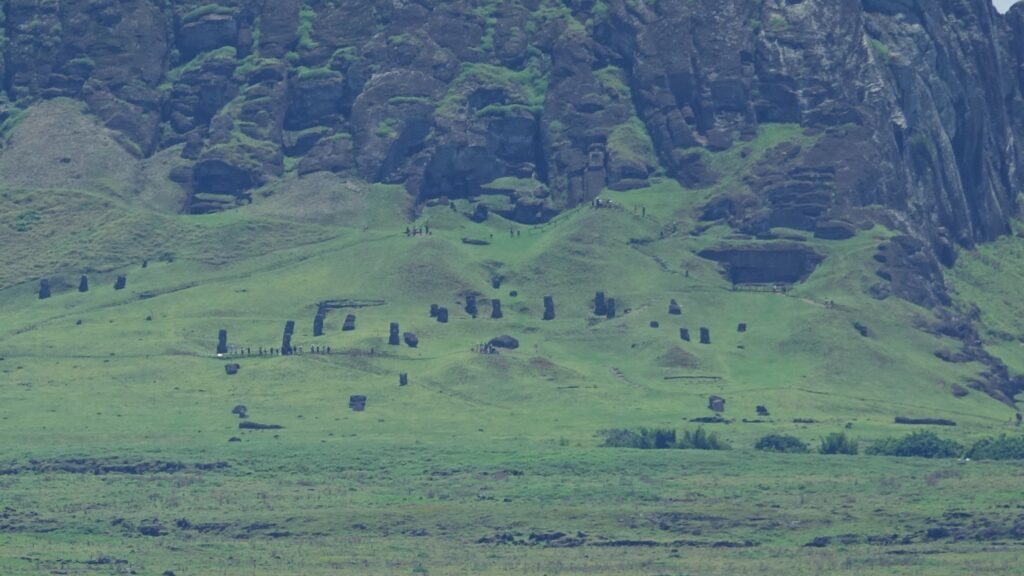
At the other side of the rocky outcrop, in the picture above, is the quarry which provided the stone from which the moai were carved.
Below is a closer view which shows several moai now part buried in the hillside, there is also one carved into the cliff face slightly right of centre.
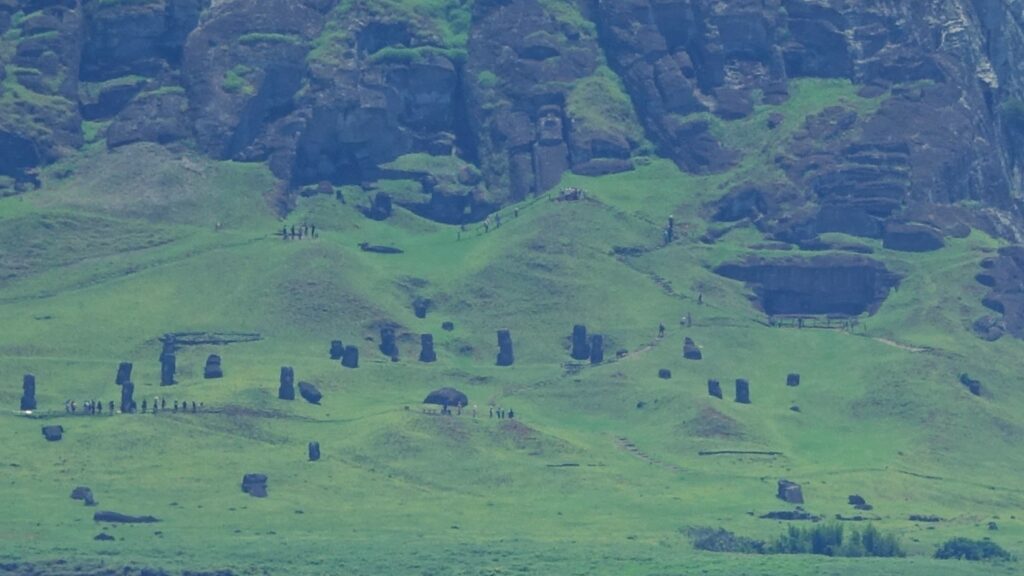
The Bird-Man Cult
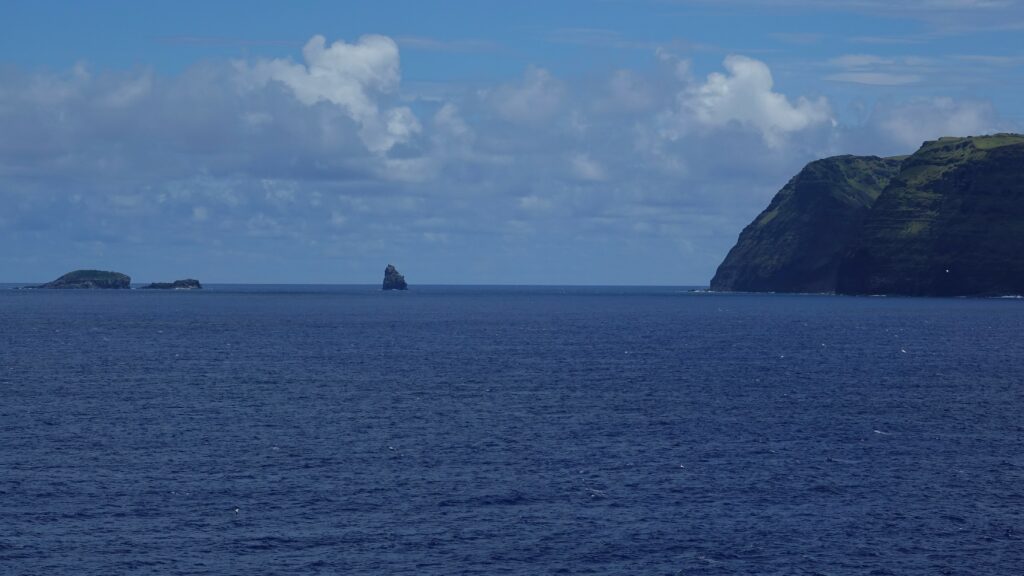
An important food source for the islanders was bird eggs.
The bird-man (Tangata manu) was the winner of a traditional ritual competition where the island’s ‘men of importance’ each appointed one or two ‘hopu’ (men of lesser status). The hopu’s task was to climb down the cliff, then swim out to Motu Nui (the island on the extreme left in the above picture) with provisions for his stay and wait for the first nesting ‘sooty tern’ to lay an egg. The winner was the first hopu to steal it from the nest.
Returning with the egg he would present it to his sponsor who (i.e. the sponsor) became the successful contestant and had earned his tribe certain privileges including sole rights to harvest the Motu Nui eggs for the following five months.
The hopu’s task was extremely dangerous, many were killed ether by falling, drowning or by sharks and the practice was ended by Christian missionaries in the 1860s.
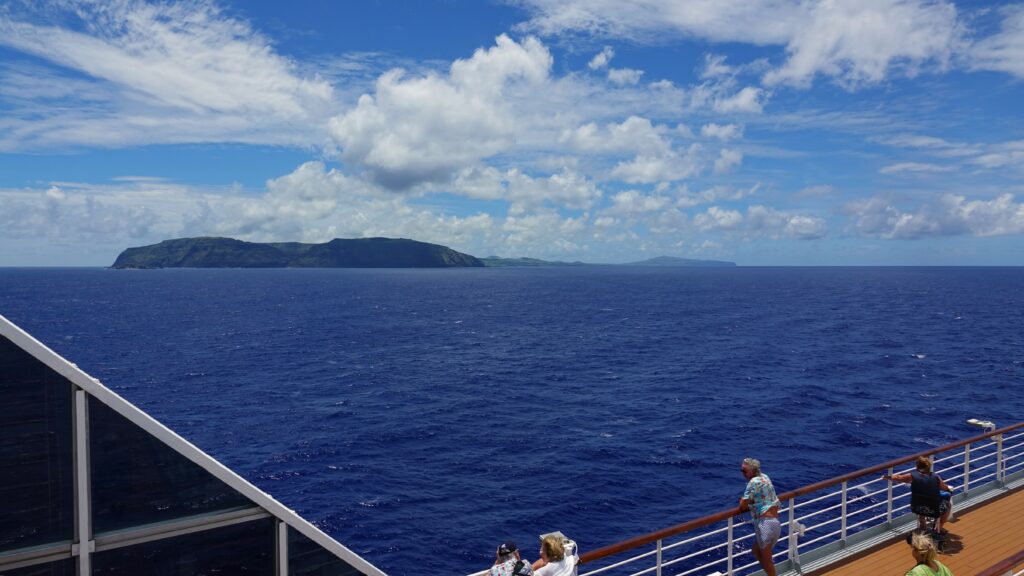
We are now sailing across the Pacific and have been putting our clocks back by one hour every night as we head towards the international date line.
Yesterday we had very rough sea and a force 8 gale but it’s much calmer today.
Tomorrow we will anchor off Pitcairn island, where many inhabitants are descendants of the HMS Bounty mutineers who took control of their ship in 1789. Some of the islanders will be coming aboard to meet us.
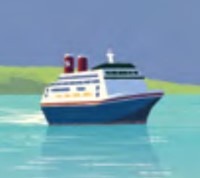
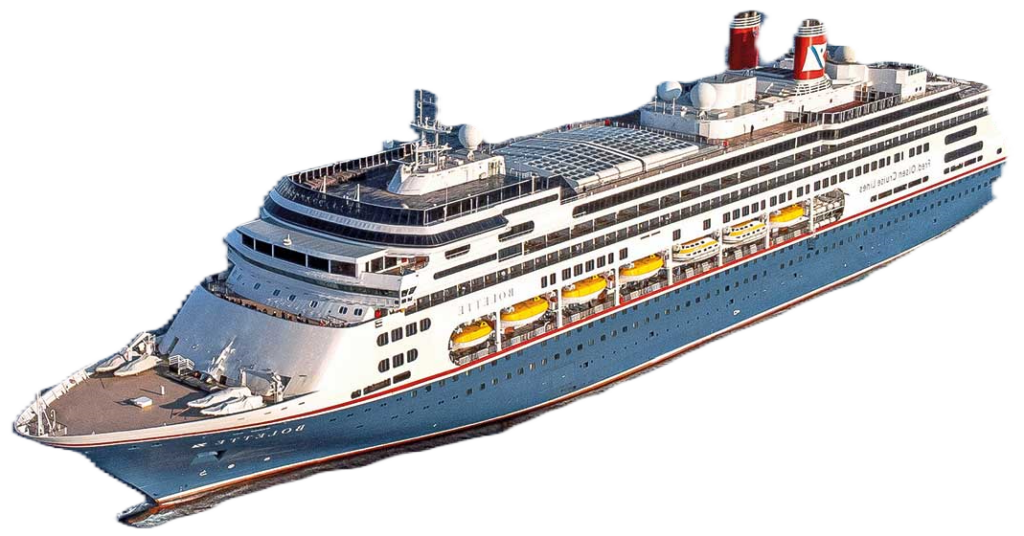
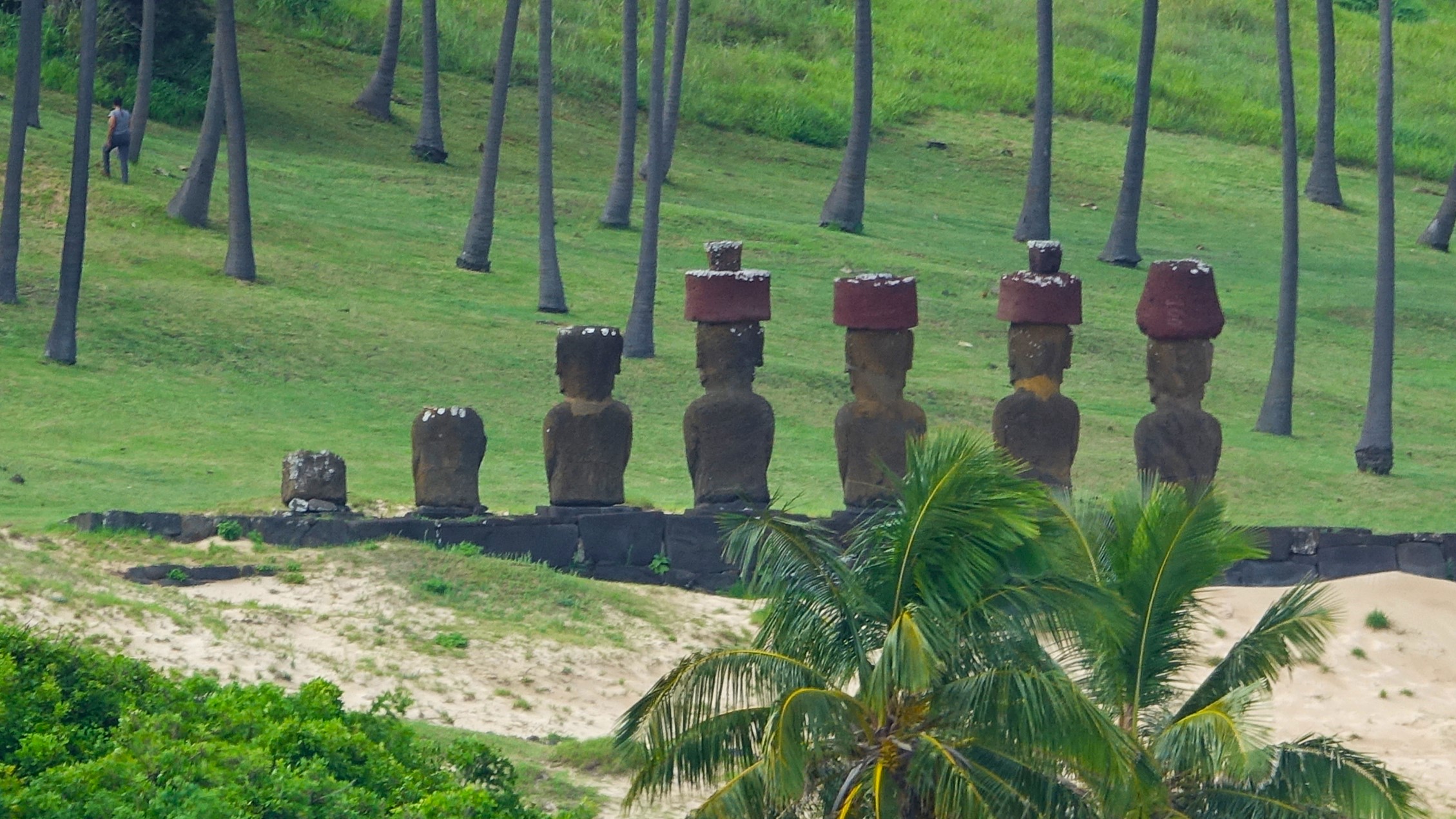
Leave a Reply